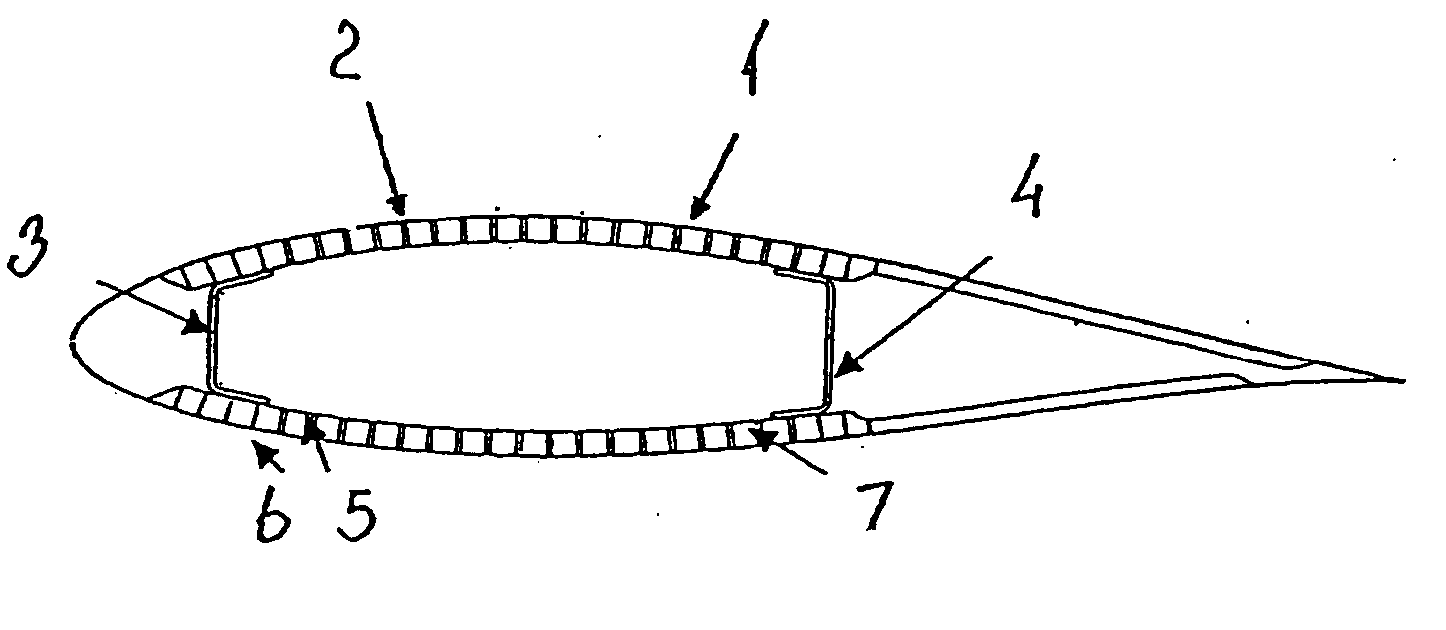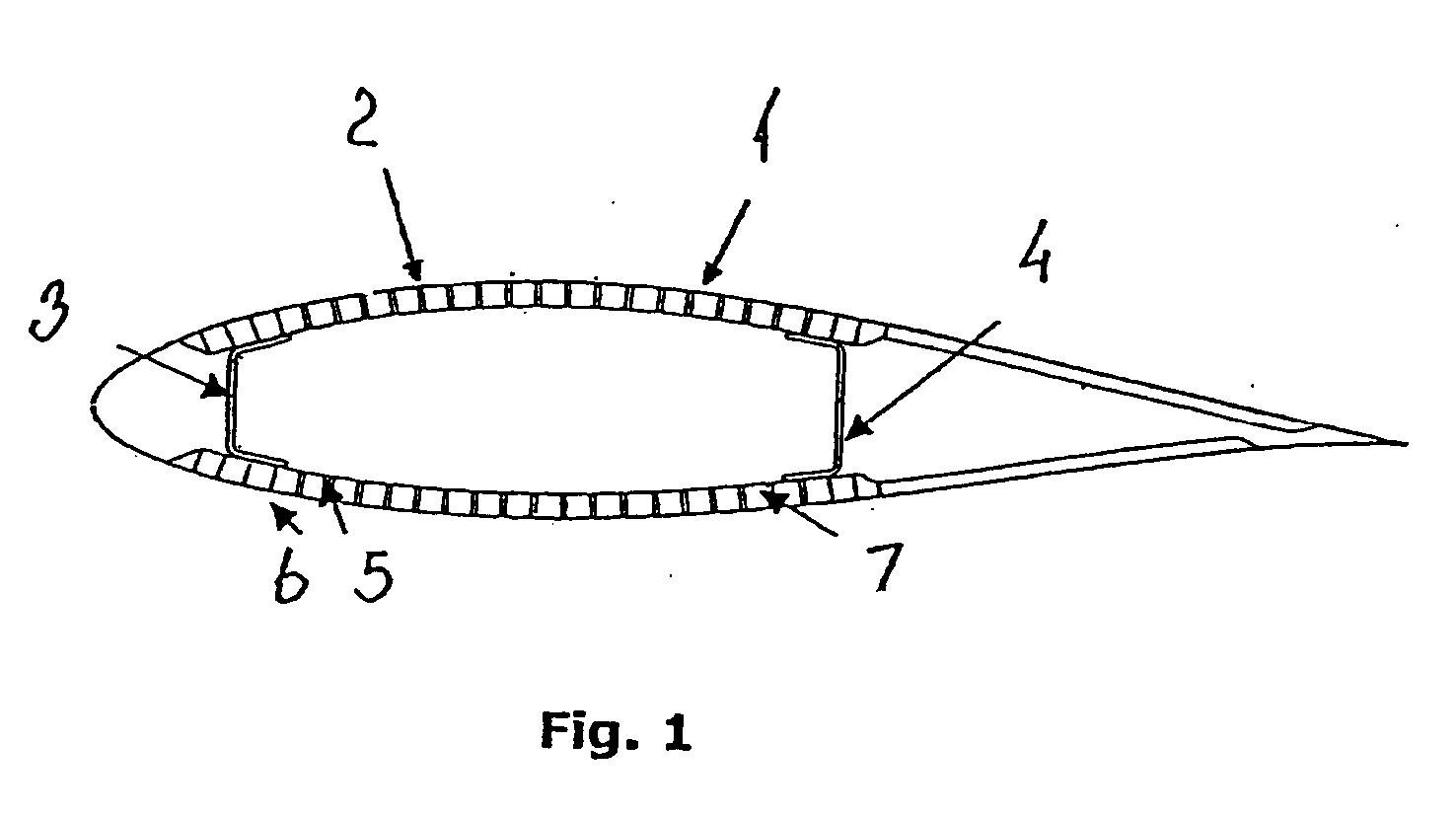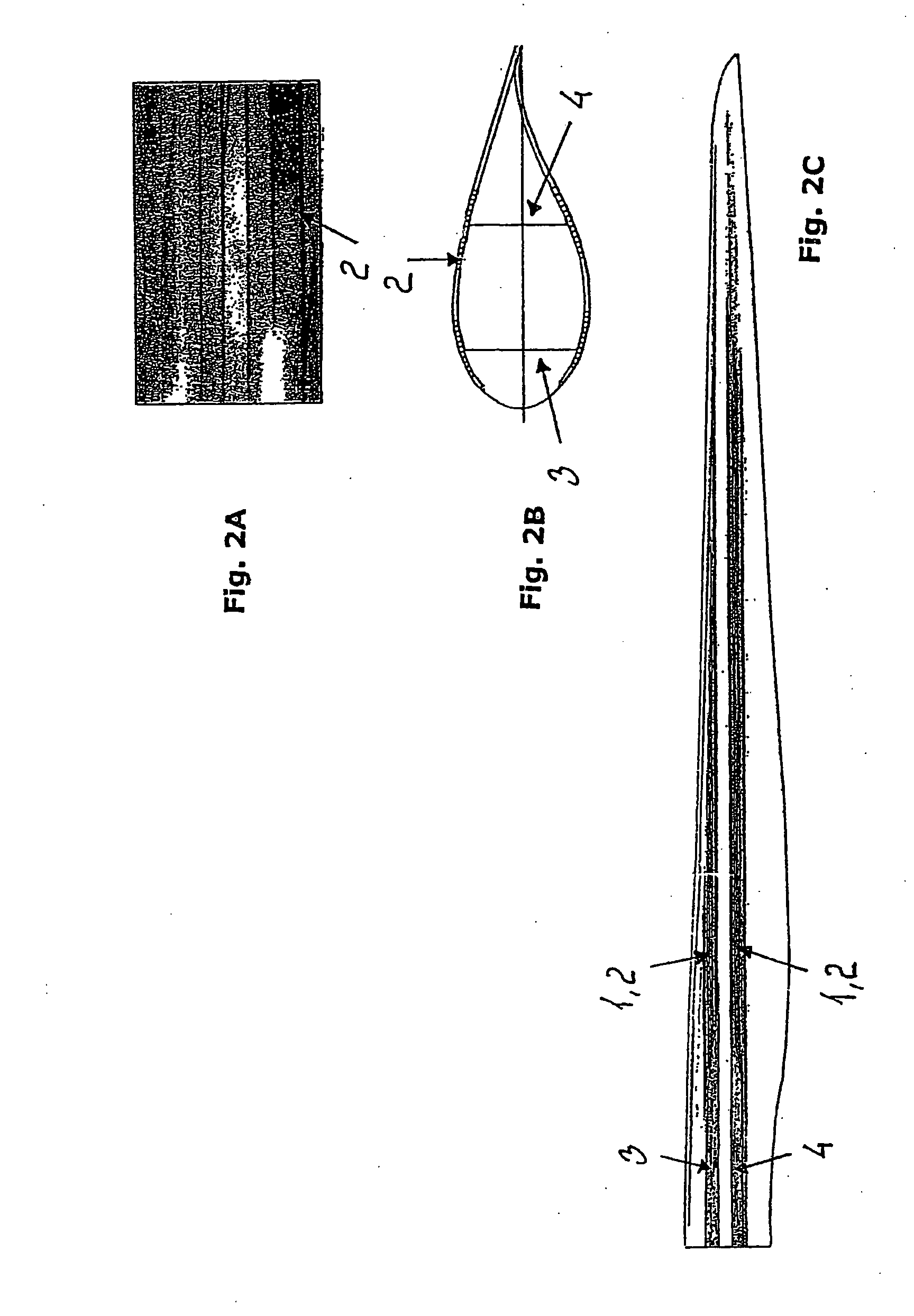Wind turbine blade
a technology of wind turbine blades and blades, which is applied in the direction of wind turbines, climate sustainability, motors, etc., can solve the problems of increasing blade stress, and achieve the effects of low void content, low material and weight, and advantageous structural properties
- Summary
- Abstract
- Description
- Claims
- Application Information
AI Technical Summary
Benefits of technology
Problems solved by technology
Method used
Image
Examples
Embodiment Construction
[0006] This object is obtained by a blade, which blade over a substantial longitudinal part comprises a layer along an outer periphery of the cross-section of the blade a blade, said layer constituted by a plurality of pre-fabricated strips arranged in a sequence along the outer periphery of the blade
[0007] By the term “a substantial longitudinal part” is understood a part extending over at least a third of the total length of the blade from tip to hub, preferably over at least half of the total length of the blade. According to a preferred embodiment, 60-85% of the total length, such as about 70%, comprises such layer.
[0008] Thereby, the optimal material properties may be obtained by combining different types of strips, such as pultruded fibrous composite strips comprising different fibres, such as carbon fibres, glass fibres and / or natural fibres, wooden strips, composite strips formed as hollow tubes etc. Each of the types of strips are much simpler, and thus cheaper, to manufa...
PUM
| Property | Measurement | Unit |
|---|---|---|
| volume fraction | aaaaa | aaaaa |
| volume fraction | aaaaa | aaaaa |
| stress concentration | aaaaa | aaaaa |
Abstract
Description
Claims
Application Information
 Login to View More
Login to View More - R&D
- Intellectual Property
- Life Sciences
- Materials
- Tech Scout
- Unparalleled Data Quality
- Higher Quality Content
- 60% Fewer Hallucinations
Browse by: Latest US Patents, China's latest patents, Technical Efficacy Thesaurus, Application Domain, Technology Topic, Popular Technical Reports.
© 2025 PatSnap. All rights reserved.Legal|Privacy policy|Modern Slavery Act Transparency Statement|Sitemap|About US| Contact US: help@patsnap.com



